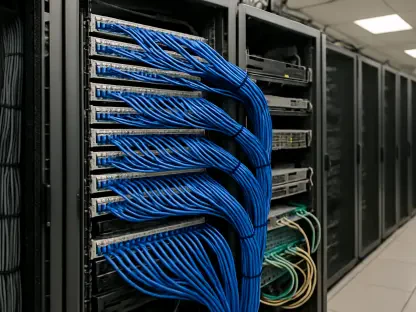The transition from traditional Virtual Private Networks (VPNs) to Zero Trust Network Access (ZTNA) is gaining momentum as organizations adapt to the evolving needs of remote work, cloud-based applications, and heightened security threats. In a recent webinar hosted by Cisco, experts discussed the reasoning behind this shift, the advantages of ZTNA, and potential pitfalls that companies should be mindful of during the transition. This evolution in remote access technology is characterized by a move from broad, network-level access granted by VPNs to more granular, application-specific access provided by ZTNA. As enterprises strive to enhance security and performance while accommodating an increasingly distributed workforce, the merits and challenges of ZTNA have become a focal point in cybersecurity discussions, making it essential for organizations to understand what this shift entails.
The Need for Granular Access Control
One of the primary advantages of ZTNA over VPNs is its ability to offer more refined access control. Traditional VPNs provide access to the entire network once a user is connected, which poses a significant security risk if credentials are compromised. This broad access can lead to unauthorized access to sensitive data and systems, increasing the potential for security breaches. As threats become more sophisticated, the limitations of VPNs become more apparent. This is where ZTNA steps in to offer a streamlined approach, verifying user identities and granting access only to specific applications and data necessary for their role. This approach significantly reduces the attack surface by limiting access to only what is needed.
By implementing ZTNA, organizations can ensure that even if a user’s credentials are compromised, the potential damage is minimized. This level of control is crucial in preventing lateral movement within the network, where a malicious actor could gain more access than initially intended. Furthermore, ZTNA’s ability to continuously monitor and re-evaluate access controls in real-time adds an extra layer of security, adapting dynamically to any changes in user behavior or risk profiles. This not only enhances security but also enables compliance with regulatory requirements by precisely controlling user access to sensitive information.
Enhanced Security Measures
ZTNA’s identity-centric model incorporates stronger authentication methods and encryption protocols, which are crucial in minimizing the risk of over-privileged access and lateral attacks within the network. Unlike VPNs, which often rely on a single layer of security, ZTNA employs multiple layers of verification to ensure that only authorized users can access specific resources. This multi-faceted approach to authentication includes techniques such as multi-factor authentication (MFA) and adaptive authentication, which verifies identities based on contextual information like user location and device security posture.
This enhanced security framework is particularly important in today’s threat landscape, where cyberattacks are becoming increasingly sophisticated. By adopting ZTNA, organizations can better protect their sensitive data and maintain a robust security posture. The comprehensive approach to security also includes continuous monitoring and real-time threat detection capabilities, providing an added layer of protection against potential breaches. This vigilance allows security teams to quickly identify and respond to abnormal behaviors or potential intrusions, thereby reducing the time attackers have to explore and exploit network vulnerabilities.
Additionally, ZTNA’s encryption protocols ensure that data remains secure as it traverses the network. This is crucial for protecting information in transit, particularly when interacting with cloud-based applications. ZTNA’s focus on security extends beyond just user access, encompassing a holistic approach that includes data encryption, behavior monitoring, and proactive threat management. This thorough commitment to security enables organizations to stay one step ahead of evolving cyber threats, reinforcing their defenses against increasingly complex attack vectors.
Performance and Scalability Benefits
Enterprises often face latency and throughput issues with traditional VPNs, especially when dealing with a large number of remote users. ZTNA addresses these performance challenges by utilizing distributed gateways that are closer to end-users accessing cloud-based applications. This setup eliminates the need for a single, centralized VPN tunnel, resulting in improved performance and reduced latency. Consequently, users experience faster and more reliable connections, which enhances productivity and user satisfaction. This improvement in performance is especially vital for organizations relying heavily on cloud applications and services, as it ensures smooth and efficient access regardless of user location.
Moreover, ZTNA is designed to scale easily and accommodate changing user needs, locations, and devices. Its cloud-based architecture allows organizations to quickly adapt to new security threats and workforce requirements without the need for extensive infrastructure changes. This scalability makes ZTNA an ideal solution for businesses looking to future-proof their remote access strategies. As companies grow and evolve, ZTNA’s flexible and dynamic nature allows them to seamlessly expand their operations without being hindered by the limitations of traditional VPNs. The ability to effortlessly manage increasing user loads and diverse device types is a significant advantage that positions ZTNA as a forward-thinking solution for modern enterprises.
Additionally, ZTNA’s design ensures that security measures do not impede performance. By leveraging cloud resources and distributed gateways, ZTNA maintains high levels of security without the bottlenecks often associated with VPNs. This balance of security and performance is critical as organizations continue to migrate to cloud environments and adopt digital transformation initiatives. By providing a solution that meets both security and performance needs, ZTNA enables businesses to secure their operations while ensuring their employees remain productive and engaged.
Future-proofing Remote Access
As organizations continue to embrace remote work and cloud-based applications, the need for a flexible and scalable remote access solution becomes increasingly important. ZTNA’s ability to integrate seamlessly with other advanced security measures, such as multi-factor authentication and threat detection, makes it a versatile solution for evolving security threats and workforce requirements. Furthermore, the modular nature of ZTNA enables organizations to build a comprehensive security strategy, incorporating various tools and technologies that enhance their overall security posture.
Gartner predicts that by 2025, up to 70% of new remote access deployments will rely on ZTNA, underscoring the industry’s shift towards modern, identity-based access control mechanisms. By adopting ZTNA, organizations can ensure that their remote access infrastructure remains secure and adaptable to future challenges. This forward-looking approach allows businesses to stay ahead of regulatory changes, technological advancements, and emerging threats. As the workforce continues to evolve, ZTNA provides the necessary framework to support diverse work environments, ensuring that security remains robust irrespective of where employees choose to work.
In addition to enhanced security, ZTNA also offers operational efficiencies that benefit IT teams. The centralized management and visibility provided by ZTNA solutions simplify the administration of security policies and access controls. IT administrators can easily monitor user activity, enforce security protocols, and respond to incidents from a single interface. This streamlined approach reduces the complexity and workload for IT departments, allowing them to focus on strategic initiatives rather than being bogged down by routine access management tasks. The future-proof nature of ZTNA ensures that organizations can continue to safeguard their operations while maximizing the efficiency and effectiveness of their IT resources.
Addressing Potential Pitfalls
While the benefits of ZTNA are clear, there are several challenges and potential pitfalls that organizations must consider during the transition. One of the primary concerns is application compatibility. It is crucial to ensure that applications can utilize ZTNA for connection. Certain types of applications, such as multi-threaded apps or those relying on server-initiated communication protocols like RDP or FTP, may not be well-suited for the ZTNA model. This potential for incompatibility necessitates a comprehensive evaluation of existing applications and their requirements before fully committing to a ZTNA deployment. Organizations must identify which applications can seamlessly integrate with ZTNA and which might require adjustments or replacements.
Another challenge is managing the complexity associated with specialized point products for different remote access scenarios. Solutions such as Secure Access Service Edge (SASE) and Security Service Edge (SSE) aim to address this by providing a unified approach that converges multiple functionalities into a single platform. This can help streamline management and reduce the complexity of maintaining multiple security solutions. Implementing a converged security strategy not only simplifies IT operations but also enhances the overall security posture by reducing potential gaps and inconsistencies between disparate systems.
Additionally, organizations transitioning to ZTNA must also carefully manage user expectations and training. Introducing a new access framework can lead to resistance or confusion among users accustomed to traditional VPNs. Clear communication, comprehensive training programs, and ongoing support are essential to ensure a smooth transition. It is important to anticipate and address any user concerns, providing them with the necessary tools and knowledge to adapt to the new system. By proactively managing these potential pitfalls, organizations can maximize the benefits of ZTNA while minimizing any disruptions during the transition process.
Integration and Visibility Challenges
ZTNA’s identity-centric model enhances security through stronger authentication methods and encryption protocols, crucial for reducing the risk of over-privileged access and lateral attacks within networks. Unlike VPNs that often depend on a single security layer, ZTNA employs multiple verification layers to ensure only authorized users access specific resources. This multi-faceted authentication involves techniques like multi-factor authentication (MFA) and adaptive authentication, validating identities based on contextual information such as user location and device security posture.
In today’s threat landscape, where cyberattacks are increasingly sophisticated, ZTNA is essential for protecting sensitive data and maintaining robust security. Its comprehensive approach includes continuous monitoring and real-time threat detection, providing added protection against potential breaches. This vigilance enables security teams to swiftly identify and respond to abnormal behaviors or intrusions, minimizing the time attackers spend exploiting network vulnerabilities.
Moreover, ZTNA’s encryption protocols secure data during transit, crucial for interactions with cloud-based apps. Its security focus extends beyond user access to data encryption, behavior monitoring, and proactive threat management. This thorough commitment helps organizations stay ahead of evolving cyber threats, reinforcing defenses against complex attack vectors.









